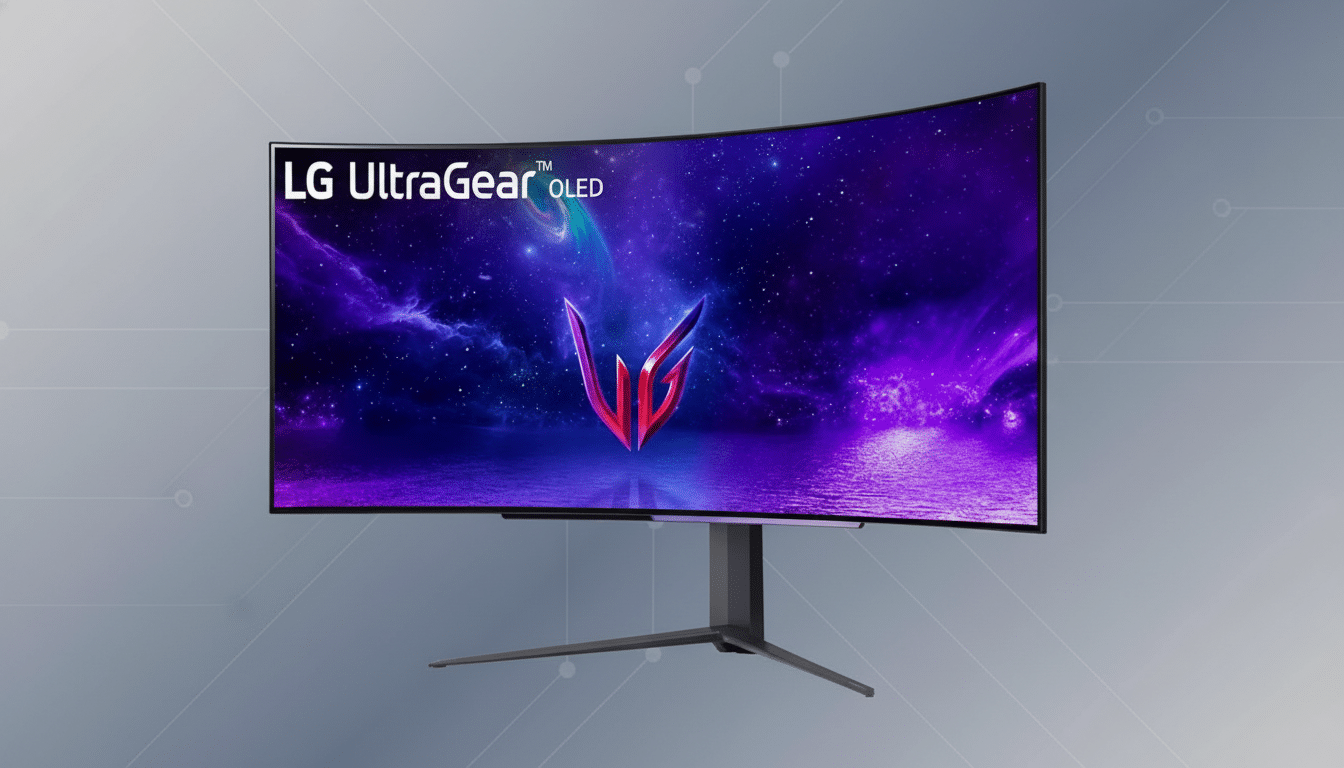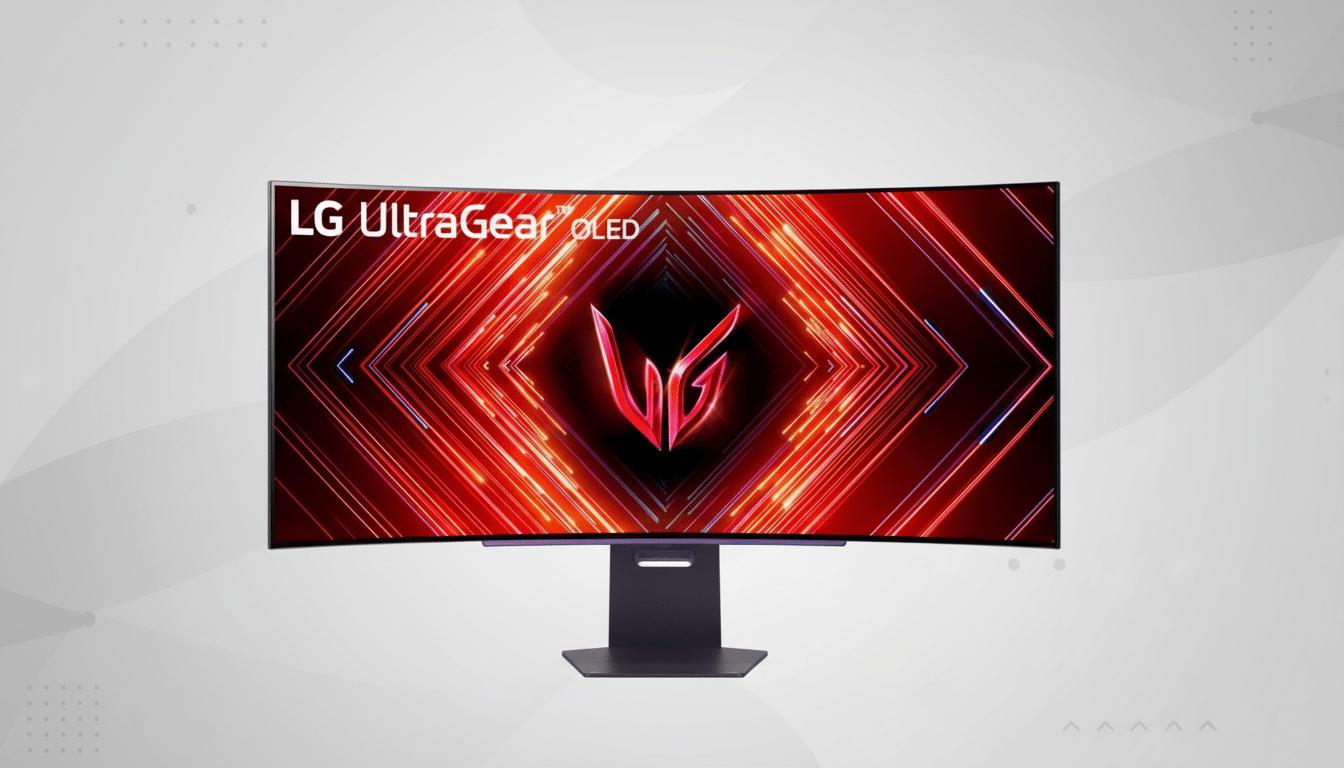Gaming monitor prices don’t often crash all at the same time, but Black Friday is an absolute game-changer for premium displays. OLED, flagship ultrawide models from ASUS ROG Swift and LG UltraGear have dropped below the $900 point, lopping hundreds of dollars off launch-day prices and bringing high-refresh, low-latency screens to much more reachable ground.
Why it matters: These are the panels gamers have been clamoring for—240Hz OLEDs with elite response times, wide variable refresh windows, and VRR support across both NVIDIA and AMD GPUs. RTINGS’ lab testing and PCMag’s recent OLED reviews suggested that sub-1ms real response behavior, along with near-infinite contrast, really cuts down on motion blur and blooming, particularly compared to older IPS models. If you passed on previous sales, this is the cycle where price point and performance finally intersect.

LG UltraGear 45-inch curved OLED monitor on sale
Deal snapshot: LG’s 45-inch curved UltraGear OLED is on sale for about $896.99, or roughly $803 off its standard $1,699 list—that’s near 47% cheaper. That’s unusually aggressive for a 21:9, 3440×1440, 240Hz OLED with an 800R curve that’s designed to create wraparound immersion.
Who it’s for: Sim racing, space and flight, and narrative-driven PC gaming where field of view and cinematic contrast are more important than raw pixel count. That 0.03ms gray-to-gray spec, in practice, leads to transitions so fast you can’t see them: RTINGS has demonstrated that OLED’s per-pixel control eliminates the dark smear on display with even fast, 240Hz IPS panels. FreeSync Premium Pro and G-Sync Compatible support quash tearing between approximately 48–240Hz, and the WRGB subpixel layout plays better with desktop text than some QD-OLED designs.
Reality check: OLED’s Automatic Brightness Limiter dims huge, bright areas, so if you’re living in never-ending white spreadsheets then this is a gaming-first display. LG’s pixel refresh and screen shift options reduce retention, but it’d be wise to leave taskbar auto-hide on and mix your content up. Check your local warranty language for burn-in coverage before you buy.
ASUS ROG Swift 32-inch 4K OLED gaming monitor deal
Deal snapshot: ASUS’s 32-inch 4K OLED is marked down to $899, a $400 price cut from its usual $1,299. For a 3840×2160, 240Hz OLED, this is headline material. This class of panel was deemed by PCMag to be “the next-best thing” for HDR gaming, with excellent contrast and punchy highlights.
Who it’s for: Single-display PC setups that share time between competitive shooters and eye-candy RPGs. So you get HDMI 2.1 for 4K 120Hz on consoles and DisplayPort 1.4 with DSC support for an even more ridiculous-sounding 4K 240Hz. In practical use, you’d need something like a recent top-end GPU (let’s say an RTX 4080/4090 or Radeon 7900 XTX) to begin utilizing that extra bandwidth in any meaningful way to approach 4K at triple-digit frames in modern titles; VRR has you covered elsewhere. ASUS layers the panel with heat-management design, uniform brightness modes, and panel care tools designed to ensure long-term health for the OLED.
Pro tip: Balance clarity and speed with in-game DLSS, FSR, or XeSS upscaling. The visual trade-off is slight at 4K, but the frame-time stability injection is massive—especially when you also use VRR to ensure tear-free motion.
Samsung Odyssey OLED G9 49-inch super ultrawide monitor
Deal snapshot: Samsung’s 49-inch Odyssey OLED G9 drops to around $898, a discount of $427 that matches its lowest pricing. At 5120×1440, 32:9, and 240Hz with an 1800R curve, it’s basically a pair of 27-inch 1440p panels combined into one with no bezel.

Who it’s for: Multitaskers and sim lovers who prize maximum horizontal real estate. QD-OLED for saturated highlights and inky blacks; Picture-by-Picture and built-in KVM let you use a gaming rig and separate work PC simultaneously. Just be aware of the horsepower: 5120×1440 at high settings can be a tall order for midrange GPUs. Use dynamic resolution or temporal upscalers to maintain a steady 120–240Hz profile.
Real-world upside: The 32:9 aspect is game-changing in cockpit games—no head-swiveling to see that side mirror and peripheral instruments. If you’re a competitive FPS player and only interested in focusing on what is directly in front of you, then 16:9 and perhaps 21:9 might be the way to go.
How to choose the perfect gaming monitor panel
Match resolution to your GPU. Even the most recent Steam Hardware Survey pegs 1080p and 1440p as dominant, while the adoption of 4K continues to climb. If you’re running a midrange card, it’s also easier to feed an ultrawide 3440×1440 at 240Hz than a 4K at that rate. High-refresh VRR windows (48–240Hz) are your friend—go get some.
Mind connectivity and bandwidth. For consoles, make sure you have HDMI 2.1, whereas for high-refresh PC output you’ll want DisplayPort 1.4 with DSC. Turn on the panel’s “4:4:4” or “PC mode” for crisp text, and experiment with HDR on a per-game basis—some games require in-game slider adjustment to prevent clipping.
Plan for ergonomics. A 45–49 inch curved screen requires desk depth; get your eyes in the neighborhood of 30–36 inches or so, and you won’t notice edge distortion. If you’re super-sensitive to text fringing, definitely see a QD-OLED in person; its triangular subpixel arrangement can demonstrate mild color fringing on fine text, though it’s largely impossible to see during gaming.
Last but not least, consider panel maintenance features and warranty policy. It is standard now; everyone knows. (“Pixel shift,” “Logo dimming,” and every few hours, a panel refresh.) A few brands claim they offer better image retention coverage on modern OLED displays; get the details before you check out.
Bottom line: why these Black Friday gaming monitor deals matter
Whether you’ve been waiting to finally make the jump up to OLED or ultrawide, these deals on ASUS, LG, and Samsung displays provide top-notch motion clarity and HDR impact for prices that would have been unimaginable a year ago.
Black Friday has simply put the best gaming monitors out there in reach, whatever it is you’re actually after: 4K clarity, 21:9 immersion, or a productivity-plus 32:9 canvas.

